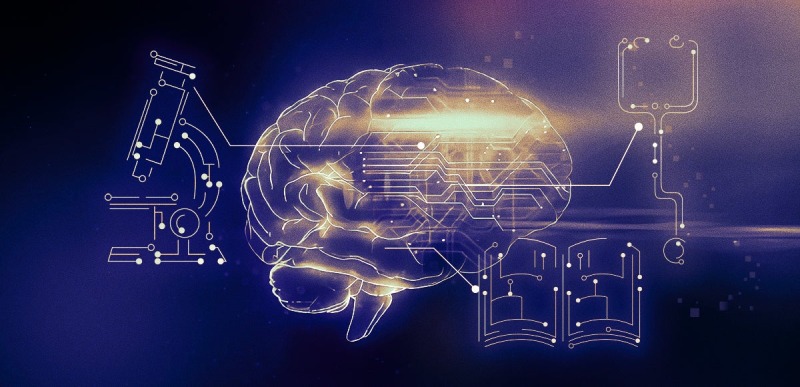- Evolving industrial maintenance through innovative AI applications enhances equipment reliability.
- AI in maintenance transcends traditional practices with its cutting-edge predictive capabilities.
- Effective implementation of AI systems in maintenance leads to significant economic advantages.
Industry dynamics continuously evolve, prompting a constant quest for methods to ensure the steadfastness of mission-critical machinery. The linchpin of thriving industrial operations lies in the robustness of its equipment, a promise that cements steadfast performance, safeguards against operational hazards, and upholds economic gains. In the backdrop of this industrial context, technology is redrawing a frontier. Intelligence systems, particularly predictive maintenance software imbued with artificial intelligence (AI), are revolutionizing maintenance methodologies, reshaping traditional practices with unprecedented foresight and precision.
Table of Contents
- The Current State of Industrial Maintenance
- Understanding AI-Enhanced Reliability
- The Role of AI in Predictive Analytics
- Reducing Unplanned Downtime with AI
- Implementing AI for Maintenance: Considerations and Best Practices
- Future Trends in AI-Driven Maintenance
- Monitoring and Continuous Learning with AI Systems
- The Global Reach of AI-Enhanced Maintenance
The Current State of Industrial Maintenance
Within the realm of industrial maintenance, traditional practices are configured into a triad:
- Reactive strategies that respond to failures.
- Preventive measures that follow a scheduled plan.
- The more advanced predictive approaches that surveil for early signs of problems.
However, this landscape is awash with challenges, such as arbitrary breakdowns and a deluge of operational data that overwhelm human analysis capabilities. Enterprises nowadays hunger for an intelligent solution that can sift through data and deliver actionable insights, thereby reducing the burden of decision-making while enhancing the accuracy of predictions.
Understanding AI-Enhanced Reliability
AI-enhanced reliability differentiates itself from its predecessors by not simply relying on static signs or established thresholds but by harnessing the collective intelligence of continuously captured data to predict and preempt potential malfunctions. This change in maintenance strategies amplifies the usable life of the equipment and reduces unnecessary expenses by repurposing routine checks and setting timetables into calculated moves. AI integration is moving from a calendar-based maintenance model to condition-based or predictive maintenance software essential to modern industrial productivity.
The Role of AI in Predictive Analytics
The delineating feature of AI in predictive analytics is its deft capability to pinpoint potential failure points and ascertain the optimal juncture for intervention. When examining large sets of complex data, AI algorithms detect anomalies and patterns overlooked by traditional methods, bestowing a level of discernment essential in averting equipment failures. The profundity of AI’s role is captured by case studies and reports highlighting AI’s monumental impact on maintenance practices by forecasting with renewed fidelity and timeliness.
Reducing Unplanned Downtime with AI
Unplanned downtime can severely hamstring industrial prowess, which carries heavy financial burdens. AI excels in maintenance scheduling by anticipating failures before they occur and advising on the most efficacious interventions. This proactivity in addressing equipment vulnerabilities goes a long way in insulating industries against operational pauses and productivity losses, thereby sustaining an unbroken output chain. The integration of AI not merely propels a downturn in maintenance costs but accrues broad-based benefits across the value stream of businesses, reinforcing a company’s competitive edge.
Implementing AI for Maintenance: Considerations and Best Practices
Adapting an AI-driven strategy for maintenance is equivalent to steering a cultural shift; it mandates meticulous planning, the establishment of a comprehensive data network, and alignment with organizational goals. Leadership teams must champion this transformation, inculcate trust in the system’s predictive recommendations, and scale the workforce to coexist seamlessly with intelligent machines. The foray into AI-aided maintenance is a journey that requires preparedness for new landscapes of operation, anchored by the central tenets of transparency, agility, and continuous improvement.
Future Trends in AI-Driven Maintenance
While AI’s present-day applications in maintenance are already highly transformative, the horizon is aglow with even more significant potential. Forward-looking insights prophesize an era in which machine learning algorithms and robotics will further refine maintenance processes. Businesses keen on persisting at the cusp of innovation must remain vigilant of such future trends, adapting their workflows to accommodate revolutionary technologies.
Monitoring and Continuous Learning with AI Systems
The hallmark of AI systems is their inherent aptitude for continuous learning. They forge feedback loops that refine their predictive prowess with each data cycle. This iterative learning process equips AI software with an ever-sharpening acumen, tailoring its output to the nuanced requirements and operational conditions it encounters. Such adaptability ensures that AI doesn’t merely coast on its initial programming but thrives on evolving industry landscapes, becoming an indispensable partner in operational optimality.
The Global Reach of AI-Enhanced Maintenance
AI implementations in maintenance are not bound by geographic frontiers, benefitting sectors and industries worldwide. A tapestry of multinational companies has already illustrated the global appeal of AI in this domain, charting successes that underscore the universality of its applications. From Asia to the Americas, the surge in AI-enhanced reliability resonates with a unifying theme: the elevation of efficiency, the slashing of extraneous costs, and the propelling of safe, uninterrupted industrial operations, regardless of location or scale.

